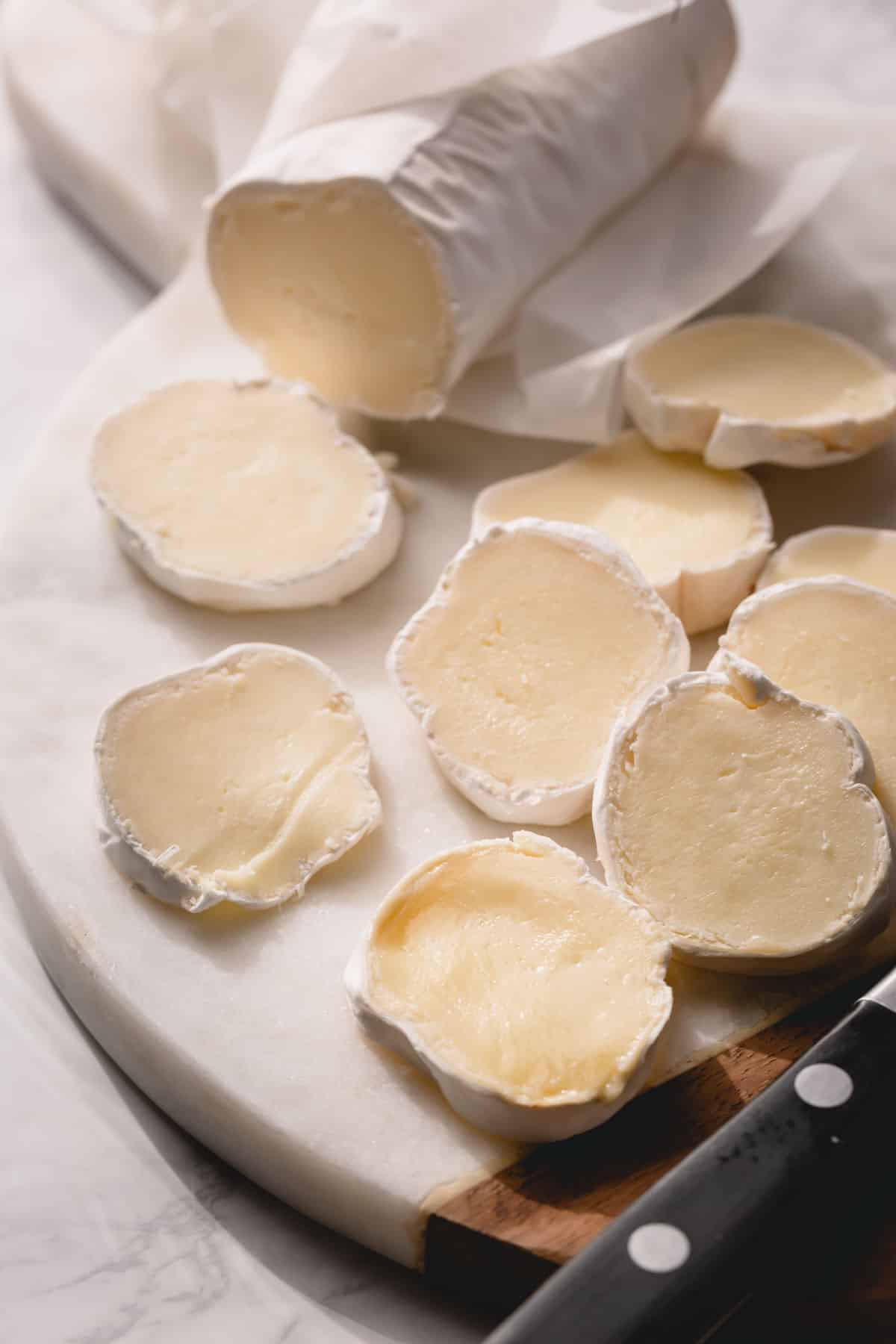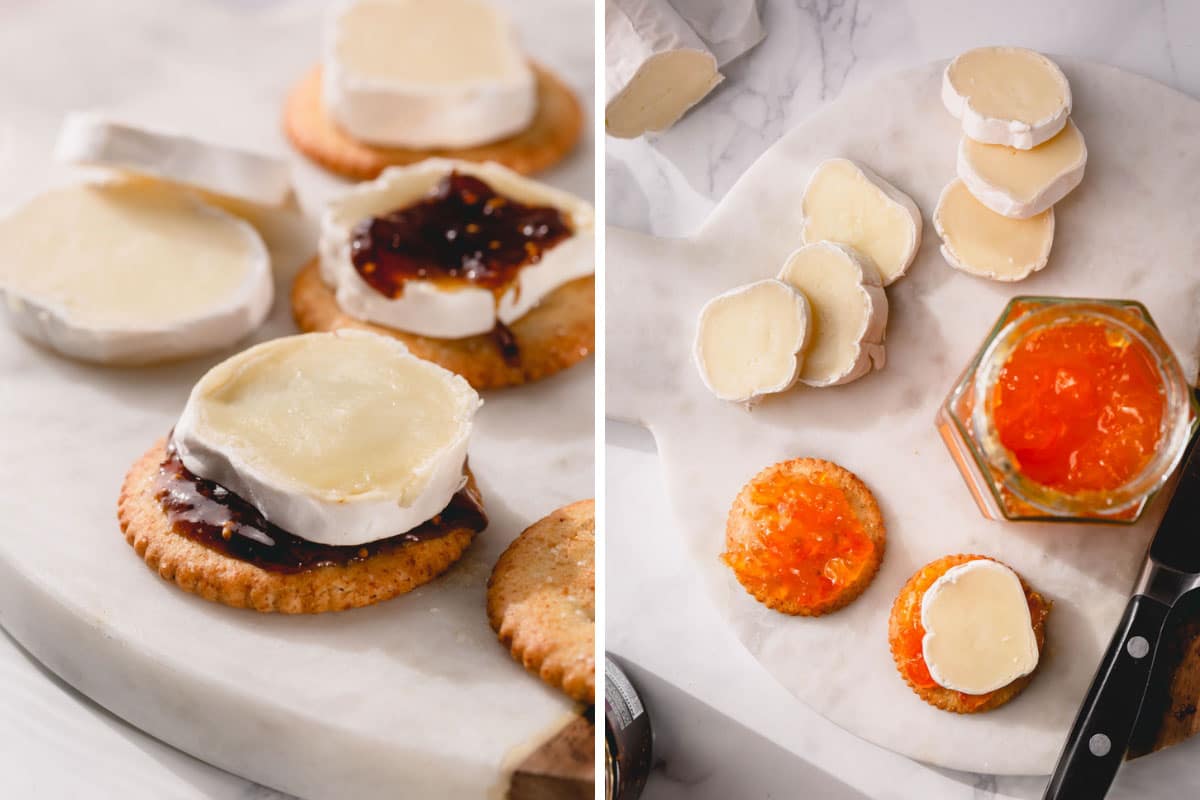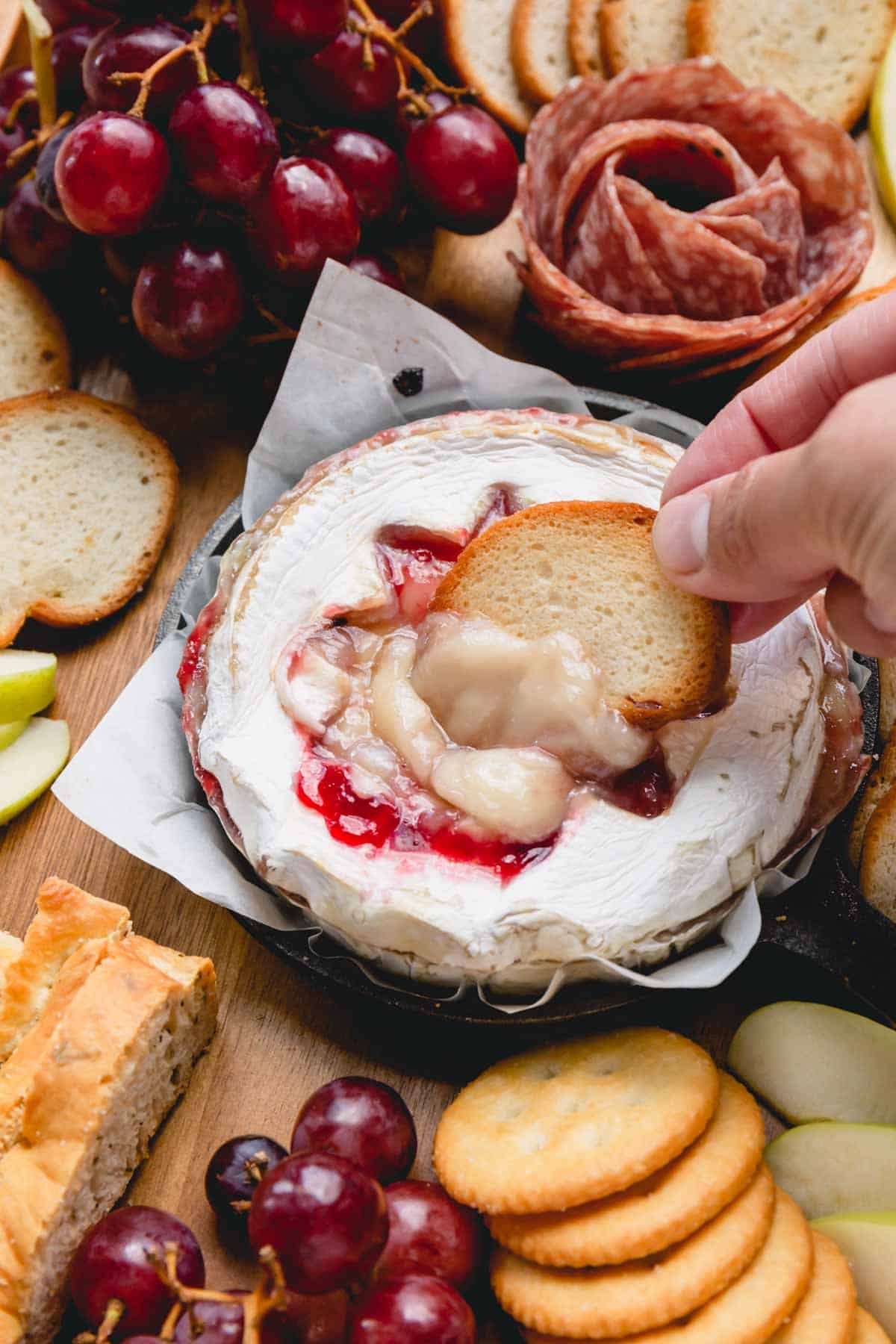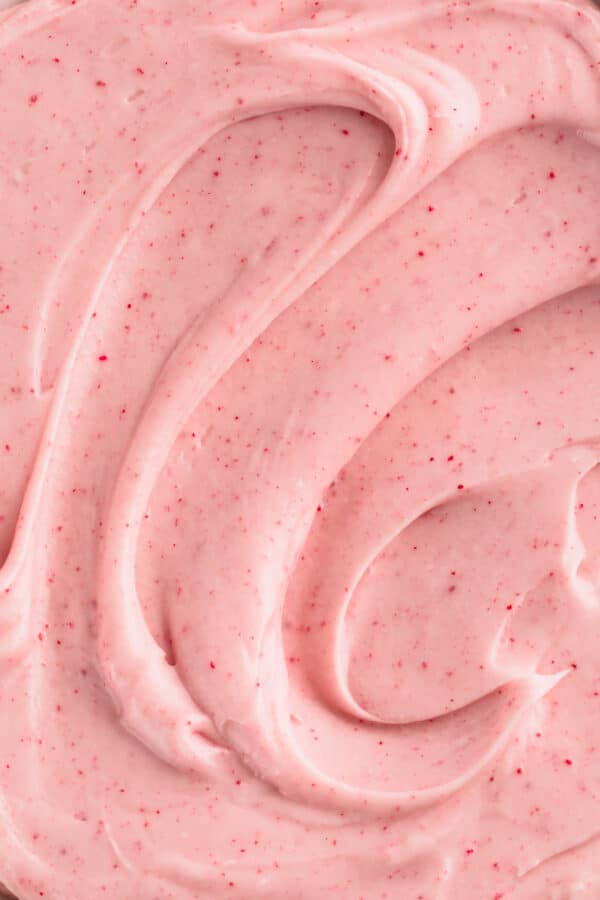Learn everything about this beloved, creamy cheese in my ultimate guide to brie, including what it tastes like and how to serve and store it.

Table of Contents
If you’ve ever felt intimidated to try brie, you’re not alone! It took me a while to try this soft French cheese. But I immediately fell in love with its rich, buttery flavor!
Here’s the lowdown on my favorite soft-ripened cheese, Brie Cheese 101!
What is Brie?
Brie is a soft, buttery cow’s milk cheese named after Brie, a region in Northern France. It’s enveloped in a bright white, edible rind with a soft center that’s gooey when baked.
It’s a soft-ripened cheese which means its aged from the outside in. The mold grows on the outside of the cheese and forms the chewy rind and creamy center.
By the way, authentic Brie is only produced in France.
Because it’s made with raw, unpasteurized cow’s milk, it’s illegal in the United States. But don’t worry, there’re pasteurized versions available for us in the States!
What does it taste like?
Brie is rich yet mild with an earthy flavor that resembles mushrooms.
It’s often compared to camembert cheese in terms of flavor and texture, although camembert is a bit more intense and not as soft.
Whatever you do, don’t just scoop out the melt-in-your-mouth center referred to as the paste. Not only is the rind safe to eat, it complements the velvety center with its umami flavor!

How it’s made?
Rennet is added to the raw cow’s milk and warmed to encourage coagulation, thus curds. The cheese is then cut into molds and drained.
It’s removed from the molds, salted, and sprayed with bacteria, then aged for around 4 weeks.
The rind blooms, and the paste ripens until it’s ready to enjoy with a glass of wine and some fig jam. Yes, please!
Serving Ideas:
Brie is humble yet fancy which makes it perfect for a dinner party or holiday table. While it elevates a special occasion, you don’t need a reason or a recipe to enjoy this luxurious cheese.
Thanks to its mild flavor, it pairs well with almost anything.
Here are a few of my favorite ways to enjoy this versatile cheese.
- Baked Brie – Bake a wheel of Brie cheese in the oven at 350 degrees until the center is gooey – about 15 minutes. Top with your favorite jam and walnuts. Serve warm with crackers.
- Brie bites – I love to pair a slice of brie with ritz cracker and jam, especially with spicy pepper jelly or a fig jam!
- Brie en croute – Wrap a wheel of Brie inside puff pastry brushed with egg wash, then bake at 425°F until the pastry is golden brown. Try filling it with honey, pecans, cranberries, raspberry jam, or caramelized onions!
- Brie grilled cheese – Use it as a creamy spread for grilled cheese or a panini. It pairs well with sweet and savory ingredients like sliced apples, bacon, ham, or mushrooms.
- Charcuterie board – Combine nuts, assorted meats, crackers, fresh fruit, spreads, and preserves for a beautiful charcuterie board. Brie makes an eye-catching focal point.
And feel free to get creative with it! Use it to stuff baked chicken, spruce up some mac and cheese, or top a burger with it!

Proper Storage:
- Don’t suffocate your cheese with plastic wrap, which encourages mold growth. Let it breathe.
- Instead wrap it loosely in parchment paper and store in the refrigerator for up to one week. If the parchment paper won’t stay on, use tape to secure it.
- Wrap cut pieces of brie in plastic wrap and store in the refrigerator for up to three days.
- Enjoy Brie at room temperature. Remove the cheese from the refrigerator at least one hour before you plan to serve it.
- And throw it out if you smell ammonia, see any dark mold or if it dries out and hardens.
Substitutes for Brie:
If your local grocery store is fresh out of Brie, don’t panic. Try one of these soft-ripened cheeses to take its place.
- Camembert cheese – Both are soft-ripened cow’s milk cheese that originate from France. The difference is subtle, which makes it a great substitute if you can’t find Brie.
- Saint Andre – Saint Andre is a type of Brie with a dense, firm texture and a tangy rind!
- Coulommiers – Similar to Brie, this cheese is small and thick with a nutty flavor and a creamy texture.
- Chevre Cheese – Chevre is a type of goat cheese with a tangy flavor and creamy texture.





